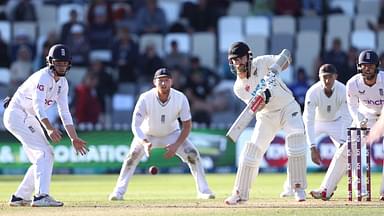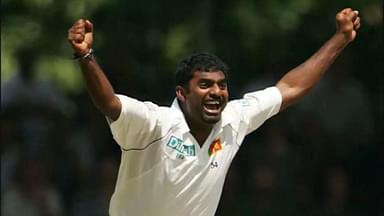Cricket follow on calculator: The England top-order have been blown away by some magnificent swing bowling by Trent Boult and co.
Advertisement
On ‘Day 2’ of the ongoing third Test match between England and New Zealand at Headingley in Leeds, some scintillating display of seam and swing bowling by the Kiwis, with Trent Boult leading the attack, has meant that England have lost half their side in the first innings within the first 12 Overs itself.
Smashing his third century in the ongoing three-match series, Daryl Mitchell (109) continued with his purple patch of form as New Zealand went on to post 329/10 in their first innings, after finding themselves in some trouble having lost half their side with 123 runs on the board.
Post that, it was all about the Kiwi pacers, Trent Boult in particular, who breathed fire by disturbing the stumps of the top-3 English batters – Alex Lees (4), Zak Crawley (6), and Ollie Pope (5), to reduce them to 17/3 within the first seven Overs of their first innings.
Soon after, the in-form Joe Root (5) was sent packing by Tim Southee as he edged one through to the wicket-keeper.
At the time of writing, left-arm pacer Neil Wagner then joined the party as well, getting rid of the English skipper Ben Stokes (18) and wicket-keeper batter Ben Foakes (0) in only his first Over of the match, to leave England gasping for breath at 89/6.
Trent Boult – Wrist Release 🎯👏#BoultBoulevardOfBewilderment pic.twitter.com/GOBPy7Nijs
— Damien Fleming (@bowlologist) June 24, 2022
Cricket follow on calculator
With England still trailing by 239 runs, New Zealand might opt to enforce the follow on if they manage to pick the remaining four wickets with the former still trailing by 200 runs.
As per the Merylebone Cricket Club (MCC) law 14.1 (lead on first innings) under the section ‘The Follow-on’,
In a two-innings match of 5 days or more, the side which bats first and leads by at least 200 runs shall have the option of requiring the other side to follow their innings.
The same option shall be available in two-innings matches of shorter duration with the minimum leads as follows:
– 150 runs in a match of 3 or 4 days;
– 100 runs in a 2-day match;
– 75 runs in a 1-day match (law 14.1.2)
With England requiring mere 38 runs to reduce New Zealand’s lead to less than 200 runs, Kane Willimson might not wish to enforce the follow-on (even if eligible), and try to pile on a massive second innings lead and hand England a stiff, steep target to chase in the fourth innings of the match.



